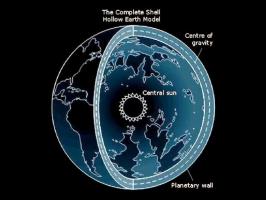Copy Link
Add to Bookmark
Report
Hackers Directory Volume 19

=======================================
[ Hacker Supreme - Hack Directory #19 ]
=======================================
(info Uploaded to The Cartel AE Line.)
Mobile Telephone Communications
Mobile telephone communications is not the same thing as Cellular. Mobile
telephone service is not as advanced as Cellular, and not as efficient. Mobile
telephone service limits the number of customers sharply, while Cellular is
designed to solve the problems of Mobile telephone service.
The signals for Mobile communications are sent by high-power transmitters and
antennas that provide an area of approx. 20-30 miles with service.
A base unit of a Mobile communications system transmits and receives on
different frequencies at the same time. Typical power for the radio base
station transmitter is 200-250 watts.
Mobile telephone facilities tie in with the normal fixed-position telephone
system, however base units can be owned by a Radio Common Carrier (RCC). RCCs
running mobile telephone systems are charged by the telephone company for use
of the normal phone system.
DIAGRAM:
--------
^-Base antenna Mobile unit
| |
|- - - - - - - - - /-- --\
| ^Signal^ | (Car) |
---------------------------------------
^-------<-20-30 Miles->---|
^ |-From
/===========\ | mobile
|Receiver/ | | antenna
|Transmitter| =============
/===========\ |Receiver/ | |-|
|Control | |Transmitter|-|*|
|Terminal | ============= |-|
\===========/ ^
| Handset
| <-Telephone
| <-Land line
|
======= =======
| C.O.| | C.O.|---[-*-]
======= ======= |*|
| | -----
| | Fixed
========= ========= Phone
|Switch |--------------|Switch |
|Network| Transmission |Network|
========= Link =========
---------------------------------------
(Above diagram from 'Understanding Telephone Electronics' chapter 10.)
As you can see from the above diagram, calls placed from the Fixed position
telephone are routed through a Central Office as normal, through a Switch
Network, to another Switch network, and to another CO. From the second CO
(nearest to the Mobile unit), the signals are sent on a telephone line to the
control terminal, to the receiver, then to the base unit (antenna). From the
base unit, the radio signals are sent to the site of the mobile telephone.
Calls from the mobile telephone operate in the same manner. An idle radio
channel is selected (like seizure of a trunk for a LD call) and the signals are
sent over the mobile network.
If no channel is available for use, then a busy indication is triggered
(similar to a re-order). If a channel is available, the customer will be
prompted with a dial tone, similar to normal fixed-position telephone service.
The area that this would work in is called the subscriber's home area. When a
mobile telephone service subscriber leaves the service area, he is then
referred to as a Roamer. Since the mobile unit is out of the service area,
special preparations have to be made to continue communications to/from that
mobile unit.
SIGNALLING
----------
Mobile signalling tones are selected (like touch tones) to avoid possible
reproduction of the signalling tone on the voice link, to cause a signalling
mistake. The IMTS (Improved Mobile Telephone Service) uses in band signalling
of tones from 1300Hz-2200Hz. Another method of signalling is the MTS (Mobile
Telephone System). MTS is older than IMTS, and MTS uses in band signalling of
tones from 600Hz-1500Hz, and some use 2805 Hz in manual operation.
CALL COMPLETION
---------------
In this instance, let's say a call is being placed from a normal telephone to
a Mobile unit. First off, the base station selects one idle channel and places
a 2000Hz idle tone on it. All on hook Mobile units active in that service area
find and lock onto the channel that carries the 2000Hz idle tone. Now each
Mobile unit listens for it's specific number on that channel. When an idle
channel becomes busy, a new channel is selected for use, and the process is
repeated.
Now the caller's call is sent through the telephone network the same way as a
normal telephone call. When this call reaches the control terminal, the
terminal seizes the already marked idle channel (with every on-hook mobile unit
listening to it) and applies a 1800Hz seize tone. This tone keeps other mobile
units from using it to complete other calls. The called number is outpulsed
over the base station transmitter at ten pulses per second, with idle tone
represented as a mark, and a seize-tone represented as a space.
Since every idle mobile unit is waiting on that channel, they compare the
number being outpulsed with their own number. If the first digit of the called
mobile unit is three, and a specific mobile unit 'listening' on the channel has
a first digit of four, it stops listening to that channel, and moves to the
next channel with 2000Hz applied.
When the mobile unit receives the correct destination number, all other
mobile units are no longer listening on that particular channel. When the 7
digit number is received, the mobile supervisory unit turns on the mobile
transmitter and sends an acknowledgement signal (2150Hz guard tone) back to the
control terminal. If this signal isn't received in three seconds after
outpulsing, the seize tone is removed from that channel, and the call is
dropped. If the signal is received at the control terminal, then the mobile
phone will ring (standard two seconds on, four seconds off). If the mobile unit
being called doesn't answer in forty five seconds, the call is also dropped.
When the person answers the mobile phone and takes it off hook, the mobile
supervisory unit sends a connect tone of 1633Hz, for an answer signal. When
this is received by the control terminal, the ringing stops, and a voice path
between the two phones is established. When the mobile subscriber hangs up, a
disconnect signal is sent which consists of alternating disconnect/guard tone
(1336Hz and 2150Hz respectively) signals. Then the mobile unit begins searching
for another idle channel, and readies itself for more calls.
For an outgoing call placed by the Mobile subscriber, the mobile unit must
already be locked on the idle channel. If the unit is not, a warning light will
flash advising the user of the problem. This is similar to a re-order signal.
If the unit is already on an idle channel, the calling number will be sent to
the control terminal for billing purposes.
CELLULAR TELEPHONES
-------------------
To improve over the problems of mobile telephone service such as low amount of
users, high price, etc. AT&T invented the Cellular Concept, or the AMPS
(Advanced Mobile Phone System). This is the cellular phone concept that is used
in major cities. Los Angeles, Ca. currently has the largest cellular
communication system in the world.
Calls sent to cellular telephones are sent through the MTSO (Mobile
Telecommunications Switching Office). The MTSO handles all calls to and from
cellular telephones, and handles billing.
All incoming calls from the MTSO are sent to a Cell site in each cell, to the
actual cellular telephone. The major difference between mobile and cellular is
that cellular can use the same channel many more times than a mobile telephone
system can, providing more customers and making the service less expensive.
Once a vehicle goes out of range of one cell site, the signal is transferred
immediately, with no signal loss, to another cell site, where the call is
continued without interruption. This is called a Cellular hand-off.
Cellular communications areas are divided up into several cells, like a
honeycomb.
DIAGRAM
-------
/---\ /---\ /---\ / * \/ * \/ * \
==== |Cell ||Cell ||Cell |
|CO| | Site|| Site|| Site |
==== /---\\ /\ /\ /
| / * \\---/ \---/ \---/
| |Cell | /---\ /---\
| | Site|/ * \/ * \
| \ /|Cell ||Cell |
====== \---/ | Site|| Site |
|MTSO| \ /\ /
====== \---/ \---/
---------------------------------------
More cell sites are used for the area they are needed for. The signals are
sent from the MTSO to the each cell site. So if you were travelling in the cell
site to the far left, the signal from the MTSO would be sent to that cell. As
you move, the signal is moved.
Here is a quote from AT&T's Cellular Telephones pamphlet.
'AT&T cellular phone transmission sounds as good as your home and office
phone. Basically it's a simple concept. Each metropolitan area is divided into
sectors which form a honeycomb of cells. Each cell incorporates its own
transmitter and receiver which connects to the local phone network.
As you drive from cell to cell, sophisticated electronic equipment transfers
or 'hands off' the call to another cell site. This automatic sequence maintains
service quality throughout the conversation without interruption.'
I hope this file has been of some assistance to anyone who is curious about
the more technical aspects of the telephone system.
References
----------
Understanding Telephone Electronics-by Texas Instruments 1983
TELE Magazine issues three and four
AT&T Mobile communications pamphlet
AT&T Cellular concept pamphlet
CENTREX/CENTRON CALL FORWARDING (CONTINUED FROM TSR ISSUE #1)
IN THE FIRST ARTICLE ON CENTREX/CENTRON CALL FORWARDING, I STATED I
WOULD LIST A FEW ALTERNATE ACCESS CODES IN THE 5 STATE AREA. IF YOU NEED
THE ALTERNATE ACCESS CODES IN YOUR AREA, TRY TO CONTACT ME ON MOST ASCII
EXPRESS LINES.
ALTERNATE
LOCATION CENTREX/CENTRON ACCESS CODE
-------------------------- -----------
IOWA SIOUX CITY (712-279) 8
COUNCIL BLUFFS (712-328) 8
DES DOINES-NORTHWEST (515-270,278) 8
"" "" -DWTN. (515-286) 110
"" "" -ASHWORTH (515-223) 8
"" "" -EAST (515-263) 111
WATERERLOO (319-291) 8
DAVENPORT 319-383) 8
CEDAR RAPIDS (319-399) 8
MINNESOTA
MPLS.-DWTH. (612-344) 101
PLYMOUTH (612-536) 101
GOLDEN VALLEY (612-542) 111
BLOOMINGTON (612-887) 101
ST. PAUL-MIDWAY 111
NEW BRIGHTON (612-631) *19
ST. PAUL-SHOREVIEW (612-482) 101
ST. PAUL-DWTN. (612-221) 111
ST. CLOUD (612-255) 101
ROCHESTER (507-285) 111
BRAINERD (218-828) 111
NEBRASKA
OMAHA-DWTN. (402-422) 101
OMAHA-IZARD (402-554) 101
OMAHA-FORT (402-496) 101
GRAND ISLAND (308-381) 8
NORTH DAKOTA
FARGO (701-247) 8
BISMARK (701-222) 8
SOUTH DAKOTA
RAPID CITY (605-394) 115
ABERDEEN (605-622) 115
SIOUX FALLS (605-339) 115
TWO ADDITIONAL LOCATIONS ARE SCHEDULED FOR CONVERSION TO CENTRON
SERVICE SOON AND WILL BE REQUIRED TO USE THE ALTERNATE ACCESS CODE FOR CALL
FORWARDING AT THAT TIME.
IOWA DUBUQUE (319-588) 8 DUE LATE JUNE'86
NEBRASKA NORFOLK (402-644) 8 DUE MID JULY'86
===========================================================================
COMPETITIVE PHONE COMPANYS REACT:
MCI AND GTE SPRINT ANNOUNCED PLANS TO REDUCE THEIR LD RATES EFFECTIVE
JUNE 1. THE TWO COMPANIES SAID THEIR RATES WOULD BE COMPETITIVE WITH AT&T,
WHICH HAD BEEN EARLIER ANNOUNCED IN TSR ISSUE #1 OF THE RATE CUT ALSO
EFFECTIVE JUNE 1. INCLUDING 11.4 PERCENT FOR DAY AND EVENING HOURS AND MANY
OTHER SIMILAR REDUCTION.
===========================================================================
NWB'S INTRO TO 'SMART PHONES':
NORTHWESTERN BELL'S PUBLIC SERVICES LINE OF BUSINESS IS FIELD
TRIALING A NEW COIN PHONE PRODUCT - ONE IT HAD A HAND IN CREATING. THE NEW
COIN PHONE PRODUCT IS THE NBT(TM) 1062 COIN PHONE RETROFIT KIT DESIGNED BY
NWBELL TECHNOLOGIES. THE KIT CONVERTS STANDARD PUBLIC COIN PHONES -
DEPENDENT ON CENTRAL OFFICE ELECTRONICS - INTO "STAND ALONE" COIN PHONES,
WHICH HAS BEEN LABELED BY CODENAME AS "SMART PHONES." THERE ARE MANY NEW
FEATURES OF WHICH CUSTOMERS WILL NOT NOTICE. ALTHOUGH THE ONLY NOTICEABLE
CHANGE BETWEEN THE RETROFITED COIN PHONES AND THE RADITIONAL PUBLIC COIN
PHONES IS THE VOICE IN THE RETROFITED MODE, GENERATED BY THE KIT'S ELECTRONIC
CIRCUIT BOARD. IT INSTRUCTS USER TO DEPOSIT MONEY. CURRENTLY THE SMART
PHONES ARE BEING TESTED IN 40 COIN PHONES AROUND THE NORTHWESTERN BELL.
===========================================================================
LOCAL AREA NETWORKS (LAN):
A LOCAL AREA NETWORK IS A SYSTEM OF HARDWARE AND SOFTWARE THAT
CONNECTS A VARIETY OF SIMILAR AND DISSIMILAR COMMUNICATIONS DEVICES. THESE
DEVICES TYPICALLY ARE OPERATED BY A SINGLE COMPANY FOR INTERNAL USE WITHIN A
LIMITED GEOGRAPHICAL AREA. THE SYSTEM ALLOWS HIGH SPEED COMMUNICATIONS
BETWEEN DEVICES ON THE NETWORK WHILE MAINTAINING DATA SECURITY, BELL SO
BOLDLY CLAIMS. A VARIETY OF TRANSMISSION MEDIA ARE AVAILABLE IN THE LAN
MARKETPLACE. THESE CATEGORIZE THE MAJOR TYPES OF LOCAL AREA NETWORKS IN USE
PRESENTLY. THE MOST PREVALENT ARE TWISTED PAIR (COPPER) AND FIBER OPTIC
CABLE. BECAUSE OF ITS SUPERIOR TRANSMISSION CAPABILITIES, FIBER IS CONSIDERED
TO BE THE MEDIA OF CHOICE FOR THE FORESEEABLE FUTURE WITHIN BELL.
===========================================================================
-----------------------------------------------------------------------------
Another Great Directory from Hacker Supreme.
(Ninja Squirrel /+\, Logan - 5, Zaphod Breeblebox, Silicon Rat, Lord Vision.)
-----------------------------------------------------------------------------
==============================================================================
[ Infinity-Cartel Network ]
[ The Cartel Adventure/AE/Hack BBS 5.5 meg --- 206-825-6236, or 206-939-6162 ]
[ Infinity's Edge Adventure/AE/Cat/Hack 10 meg BBS ------------ 805-683-2725 ]
==============================================================================
]
[ The Cartel Adventure/AE/Hack BBS 5.5 meg --- 206-825-6236, or 206-939-6162 ]
[ Infinity's Edge Adventure/AE/Cat/Hack 10 meg BBS ------------ 805-683-2725 ]
================= 















